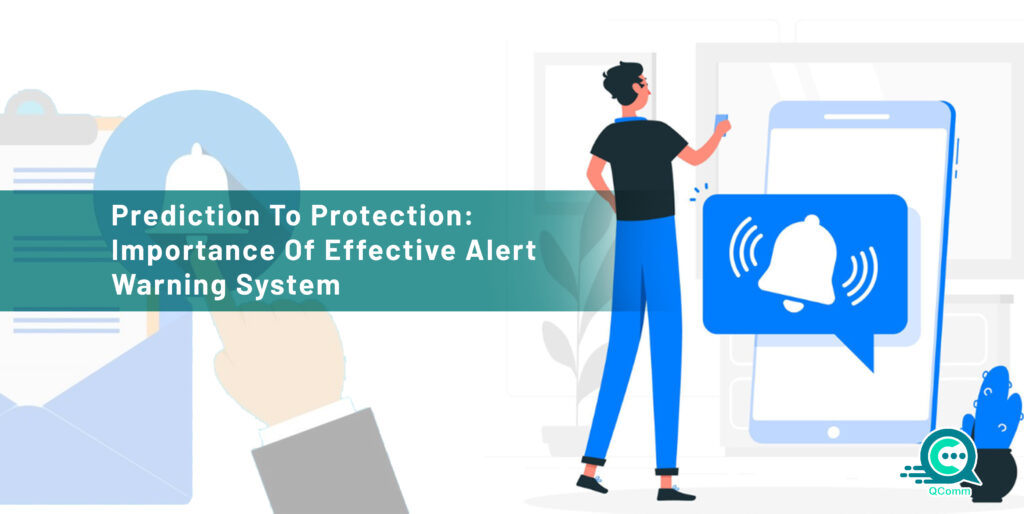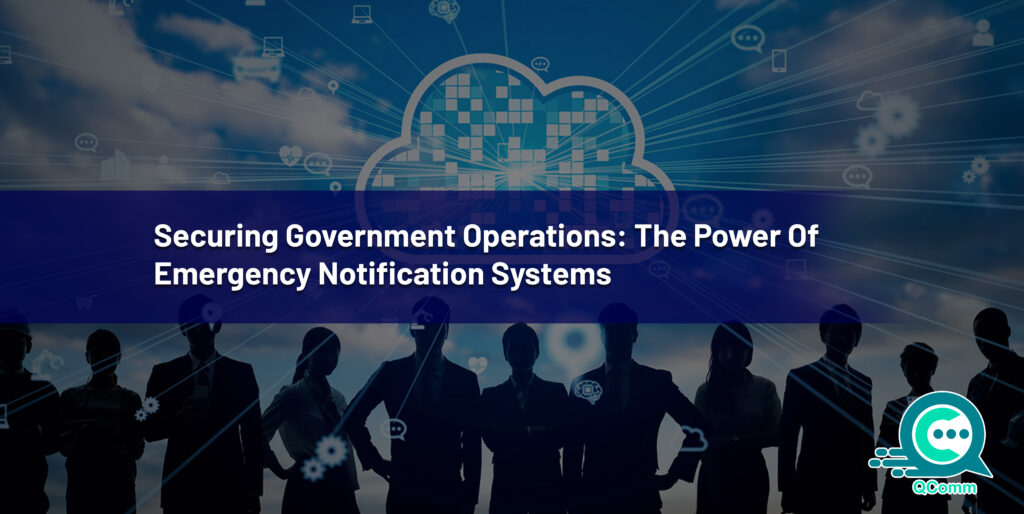
Every year, countless lives and billions of dollars are lost to natural and man-made disasters. While we cannot prevent these catastrophes, we can significantly mitigate their impact through effective early warning systems.
Imagine enjoying a peaceful evening at home when a sudden, loud alarm turns on. Your phone buzzes with a flashing emergency alert and a TSUNAMI WARNING!
Panic might be a natural first instinct, but thanks to the alert system, you have valuable time to take action. These systems act as the first line of defense, providing precious time for individuals and communities to prepare, evacuate, and protect themselves.
This scenario highlights the critical role of Emergency Alert Warning Systems (EAWS) in disaster risk management. These systems bridge the gap between prediction and protection, transforming scientific forecasts into actionable warnings for communities facing potential threats.
Power Of Early Warnings: Saving Lives & Minimizing Damages
Disasters, whether be it natural or man-made, can strike with devastating consequences.
According to the International Labour Organization (ILO), effective disaster risk management, including early warning systems, can significantly reduce deaths, injuries, and economic losses.
The studies even show that early warnings issued just 24 hours before a disaster can decrease damages by 30%.
How Do EAWS Work?
Think of EAWS as a complex network that transforms raw data into life-saving information. This process involves four key components:
Component 1: Monitoring and Early Detection
The foundation of an effective Emergency Alert Warning System is a strong monitoring system. This involves:
Sensor Networks
Many sensors, such as seismographs, weather stations, tide gauges, and satellite imagery, constantly collect data on environmental conditions.
For instance, in earthquake-prone regions seismic sensors detect ground vibrations, providing early indications of an impending quake.
Data Collection
The collected data is further transmitted to central processing centers in real time, creating a continuous stream of information to the public.
Component 2: Data Analysis and Risk Assessment
After gathering all the data, the very next step involves making a complete sense of it:
Data Processing
Sophisticated algorithms and software analyze the collected data to identify patterns and anomalies that may signal an impending disaster.
Risk Assessment
Experts evaluate the data to determine the potential severity, location, and threat timing. This involves considering factors including, historical data, population density, and infrastructure vulnerability.
Threat Level Determination
Based on the assessment, a threat level is assigned, ranging from low to high, indicating the situational urgency.
For example, during a hurricane, meteorologists analyze satellite imagery, wind speed data, and atmospheric pressure to predict the storm’s trajectory, intensity, and potential landfall.
Component 3: Dissemination Of Warnings
Effective communication is vital for the success of an EWS:
Multi-Channel Approach
Warnings are disseminated through various channels to reach the widest possible audience. These include:
- Mass media coverage, through television, radio, and newspapers.
- Digital platforms such as websites social media, and mobile apps.
- Audible warnings with sirens or alert systems.
- Text messages and emails can deliver personalized warnings.
- Notice or warnings on digital signage at public gatherings
Clear and Concise Messaging
Warnings must be easily understandable and actionable, providing clear instructions on what to do. For instance, a tsunami warning might instruct people to move to higher ground immediately.
Language and Cultural Considerations
Messages should be tailored to the specific audience, considering language, cultural norms, and literacy levels.
Component 3: Community Preparedness and Response
The final stage involves preparing communities to respond effectively to warnings:
Public Education
Raising awareness about potential hazards, the EWS, and emergency procedures is crucial.
Evacuation Plans
Developing and practicing evacuation plans for at-risk areas is essential.
Emergency Shelters
Establishing and maintaining adequate emergency shelters is vital.
Early Warning Drills
Regular drills help communities practice their response procedures.
By effectively combining these four components, early warning systems can significantly reduce the impact of disasters, saving lives and protecting livelihoods.
SOME REAL-TIME EXAMPLES
- Indian Ocean Tsunami Warning System
Established after the devastating 2004 tsunami, this system has successfully alerted millions of people to impending threats, saving countless lives.
- National Weather Service In The United States
Provides early warnings for hurricanes, tornadoes, floods, and other severe weather events, allowing communities to take shelter and protect themselves.
Key Benefits Of Effective Early Warning Systems
Early warning systems offer many benefits that extend far beyond saving lives. These systems contribute to overall community resilience and sustainable development.
Economic Impact
- Reduced Property Loss
Timely warnings allow individuals and businesses to safeguard assets through protective measures like moving valuables to higher ground or securing property.
- Business Continuity
EWS helps businesses prepare for disruptions, allowing them to develop contingency plans and reduce downtime. This is particularly crucial for sectors like transportation, energy, and healthcare.
- Insurance Premiums
Effective EWS can potentially lead to lower insurance premiums for communities with a proven track record of disaster preparedness.
Infrastructure Protection
- Safeguarding Critical Assets
Early warnings enable protective measures for essential infrastructure such as bridges, power plants, and communication networks.
- Disaster Recovery
Broadcast emergency system contributes to faster recovery efforts by minimizing damage to infrastructure, thereby accelerating the restoration of essential services.
- Sustainable Development
Protecting infrastructure through EWS supports long-term sustainable development by preventing setbacks and ensuring the continuity of essential services.
Improved Disaster Response
- Efficient Resource Allocation
Accurate and timely warnings allow for the strategic allocation of emergency resources, such as personnel, equipment, and supplies, to areas most in need.
- Enhanced Coordination
Emergency management mitigation facilitates better coordination among calamity responders, government agencies, and other stakeholders, leading to a more effective response.
- Reduced Response Time
Early warnings provide precious time for emergency responders to mobilize and reach affected areas promptly, potentially saving lives.
Community Resilience
- Empowered Communities
Broadcast emergency systems contribute to building resilient communities by providing them with the tools and knowledge to prepare for and respond to disasters.
- Psychological Well-Being
Early warnings can reduce anxiety and fear among the public by providing a sense of control and preparedness.
- Social Cohesion
Shared experiences in responding to disasters can strengthen community bonds and foster a sense of solidarity.
- Sustainable Livelihoods
By protecting lives, property, and infrastructure, EWS contributes to the preservation of livelihoods and long-term community well-being.
Role of Technology in Strengthening EAWS
Technology is a cornerstone of modern EWS, enhancing their effectiveness in several ways:
- Advanced Monitoring Systems
High-tech sensors and data collection methods provide real-time information on environmental conditions, enabling early detection of potential threats.
- Multi-Channel Communication
Leveraging diverse platforms like mobile apps, social media, and digital signage ensures that warnings reach a wide audience, including those in remote or marginalized communities.
- Data Analytics and Predictive Modeling
Advanced data analytics and predictive modeling help identify patterns, assess risks more accurately, and improve the precision of early warnings.
Here’s Where QComm Can Help!
QComm, a leading provider of digital signage solutions, offers innovative digital displays perfect for disseminating emergency alerts. These strategically placed displays can reach a wide audience in public spaces, ensuring critical information reaches everyone in real time.
QComm’s digital signage can be integrated with EAWS to automatically display clear and concise warnings, enhancing community preparedness and response times.
Building a Culture of Preparedness for a Safer Future
Investing in an effective disaster risk management system is not just about technology; it’s about building a culture of preparedness. By fostering public awareness, conducting regular drills, and maintaining robust communication channels, communities can significantly improve their ability to respond to potential disasters.
Remember: Early warnings empower you to take action and protect yourself, your family, and your community. The next time you hear an emergency alert, know that it’s a call to action, a chance to minimize the impact of a potentially


